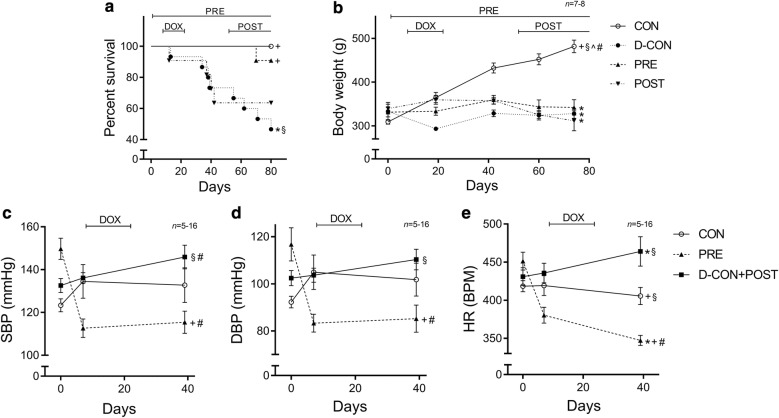Fig. 2.
Survival and clinical parameters of the animals. The survival rate in the D-CON group was significantly worse compared to that in CON, but it remained preserved in the PRE group (a). The body weight was significantly lower in groups exposed to DOX compared to that in CON, irrespective of any treatment applied (b). DOX significantly increased the heart rate of animals, while the prophylactic treatment in the PRE group significantly decreased the blood pressure and heart rate (c–e). DBP diastolic blood pressure, HR heart rate, SBP systolic blood pressure. Lines at top represent doxorubicin exposure (DOX), prophylactic (PRE) or conventionally scheduled heart failure treatment (POST), respectively. n number of animals per group (5 measurements per animal, except for single body weight measurements); Statistics: Wilcoxon’s rank-sum test except for survival (log-rank test); *p ≤ 0.05 vs. CON; +p ≤ 0.05 vs. D-CON/D-CON + POST; §p ≤ 0.05 vs. PRE; ^p ≤ 0.05 vs. POST; #p ≤ 0.05 vs. day 0

